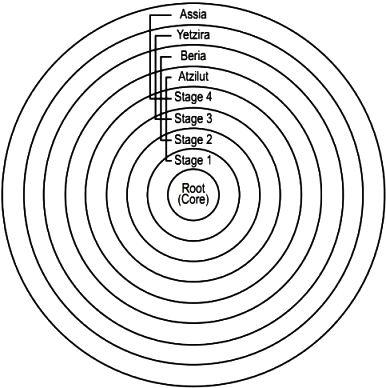
Following Adam’s shattering, each piece in the desire to receive begins to feel like an independent self, separated from its environment and wishing to absorb from it. This desire to absorb, the pulling force, or gravity—the physical parallel to the desire to receive—caused the first clusters to form in the universe, which later became the substance of the first galaxies in the universe.
As space and gravity fields created more structured forms of the desire to absorb (meaning the desire to receive), particles appeared. The absorption process continued and stars were born with planets surrounding some of them. Thus, gravity, the weakest force in Nature, created the infrastructure of the entire universe, just as Stage One of the four developmental stages of the primordial desire in creation, the weakest desire to receive, created the infrastructure for the four Stages and all the spiritual worlds that followed.
As in Stage One, the desire to receive in the corporeal inanimate consists primarily of a wish to secure its own persistence, to sustain itself. Its only relation to others is that it resists any attempt to break, dissolve, or otherwise change it. Yet, as a result of the inanimate level’s aspiration to maintain its own persistence, some particles “discovered” that they could best secure their future by collaborating with other elements.
Unlike Darwin, Kabbalah Asserts ‘No Coincidence’
Unlike Darwin’s theory of evolution, Kabbalah asserts that there is no coincidence. Particles do not really “discover” or happen to collaborate and subsequently benefit from doing so. This would imply that Nature is purposeless, random, that there is no predetermined goal at the end of the process. Instead, Baal HaSulam explains (in “Preface to the Wisdom of Kabbalah,” The Study of the Ten Sefirot, and in other places) that since our world is the last in a series of cause- and-effect events, the desires that appear in our world already contain (albeit not consciously) recollections of previous states within them, since they are their offshoots. Hence, the desire to receive in this world already has a recollection of the Four Stages, the Partzuf, and all the spiritual worlds. As a result, the preparation, the set-up for discovering the benefits in collaboration, pre-exist in all the levels of desires in this world. This is what allows them to “miraculously” discover the benefits of “negotiating into harmony,” as Sahtouris put it.





